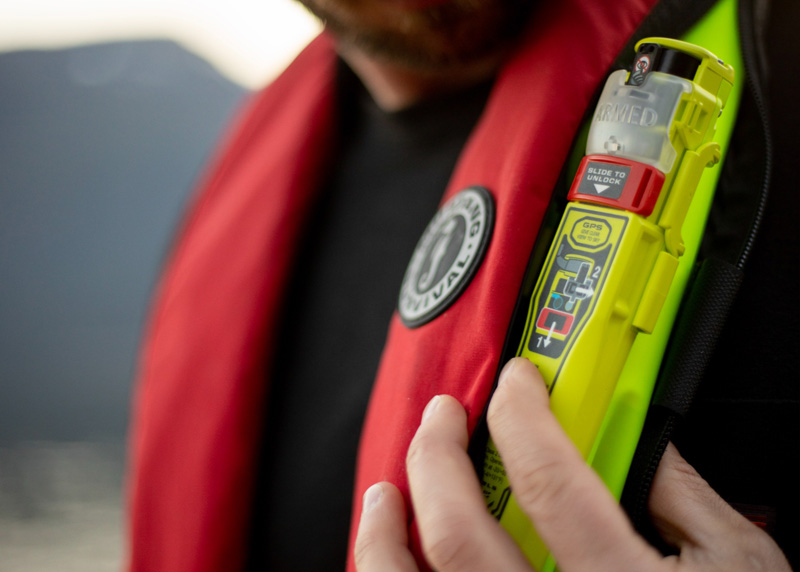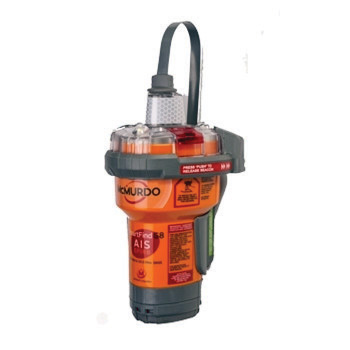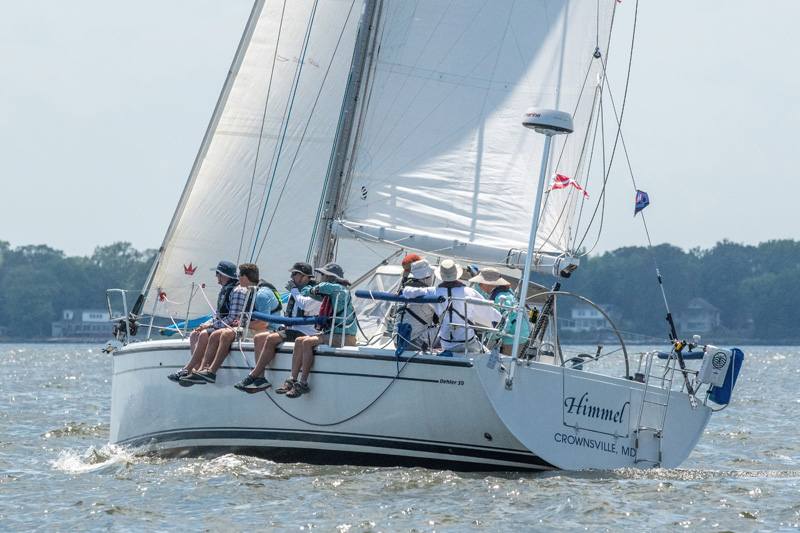Today's safety devices can be real game changers.
As technology advances, safety devices become smaller, more affordable, and more widely used. Technology once reserved for commercial traffic or ocean-crossing vessels is making its way down to the coastal cruiser and overnight Bay racer. Here's what you need to know.

AIS
Automatic Identification System, known as AIS, just keeps gaining popularity with recreational sailors, and for good reason. Vessel operators can receive and display on a chart plotter or GPS screen the position, course, speed, and other data of nearby vessels. With transponder technology, these devices also broadcast out their own vessel’s data for others to see. Although the transmission capabilities are limited to approximately line-of -sight range (about a five-mile radius), the information they transmit can make a world of difference for boaters of all stripes. Smaller, personal AIS devices are also available and can be attached to a lifejacket or life raft to transmit a man-overboard (MOB) signal. Whether you are maneuvering in a crowded waterway, operating your vessel in the dark of night, or counting every second while waiting for an emergency rescue, AIS is useful in many ways.
Such devices are available in two classes, A and B. Most recreational boats are equipped with the less complicated and less expensive Class B variety. All AIS instruments come with a unique nine-digit MMSI (Maritime Mobile Service Identity) number that is to be registered. In an emergency, the Coast Guard and other rescue watch standers will use the number to identify the boat or individual in distress.
Here on the Chesapeake it’s worth noting that 2024 is the first time AIS will be required for boats racing in the Mustang Survival Annapolis Bermuda Ocean Race. Safety committee chair Don Snelgrove tells SpinSheet, “We were one of the last offshore races to make AIS required for competing vessels. In the past we held off because of the cost and our desire to encourage more boats to participate, but AIS is getting cheaper and is becoming more widely used. In fact, a large majority of the boats that are registered for this year’s race already have it. To date, we haven’t heard objections to the new requirement, and we don’t expect any. Most everyone recognizes that it’s nice to see and be seen, especially at night or in fog, even within the confines of the Bay.”

EPIRB
Emergency Position Indicating Radio Beacons are known as EPIRBs. When activated, such a device will send a satellite signal that alerts rescue responders with your GPS location. Depending on the features of the particular unit, the device may activate manually or with water immersion. Category One EPIRBs can automatically be activated by water with a hydrostatic release of the cover. Category Two devices require manual activation. It’s important to register your EPIRB (free at noaa.gov) to link your particular device with your vessel information. EPIRBs generally have about 48 hours of transmission power.
PLB
A Personal Locater Beacon, called a PLB for short, is basically a smaller EPIRB. These devices, made for individual use, also send a signal directly to rescue agencies. Key differences from an EPIRB are that they require manual activation, and they transmit for approximately 24 hours, about half the time of an EPIRB. A PLB can be attached to your PFD or may fit inside it. A separate flotation pouch can also be purchased. PLBs should also be registered at noaa.gov.

Integrating AIS with PLBs and EPIRBs
The integration of AIS with PLBs and EPIRBs is an exciting advance that takes safety to a new level. Wearing a device that combines the two features means that if you fall off the boat while wearing your PLB, a satellite signal will go to rescue agencies and a signal will be broadcast to nearby boats.
This is a terrific advantage. It’s not hard to imagine a scenario in which a nearby boat could reach you well before official rescue personnel arrive. While integrating AIS with your PLB or EPRIB will increase the price, it may not hurt your wallet as much as you might imagine. And, as more options come onto the market, the cost is likely to come down over time. If you’re looking for a PLB/AIS combo device, the ACR Rescue Link 450 is priced at about $500. If you’re looking for an EPIRB/AIS combo, the McMurdo Smartfind G8 EPIRB AIS-Cat 2 retails for about $600.
Two other advances to take note of are Return Link Service and mobile app connectivity. Return Link Service (RLS) is a technology that communicates back to the individual or vessel that has transmitted an alert. It lets the sender know their alert has been received. As for mobile app connectivity, since we seem to use our mobile phones for everything these days, check out mobile app options. Such apps allow data from the transmitting safety device to be seamlessly shared to your phone.
Rent or buy?
Many safety devices can be rented, including your AIS, EPIRB, and PLB. Investigate pricing and consider how often you will use the equipment. You may be surprised to find that it’s worth investing in a purchase, especially for items such as AIS that can be of assistance in lots of regular circumstances, not just during a big, bucket-list adventure. For other items, such as a life raft, renting may be the way to go. Don Snelgrove, chair of the safety committee for this year’s Mustang Survival Annapolis Bermuda Ocean Race, says, “At this time I am not aware of a local company that rents life rafts. However, I have identified (with the help of organizers at the Newport Bermuda Race) Life Raft & Survival Equipment in Tiverton, RI, as an option for those looking to rent a raft. They book well in advance, so I recommend contacting them early. For example, A2B racers who will need a life raft in June should inquire as soon as possible. If you only need repacking services, Vane Brothers in Baltimore can do the job, but at this point they are no longer renting life rafts.”
What's in your ditch bag?
Let’s face it: when you pack a ditch bag, you’re preparing for a very scary situation—abandoning your vessel. If it comes to this, you will need a bag packed with all the essentials to survive until help arrives. Important ditch bag characteristics and features include buoyancy, water resistance, pockets, and exterior reflective strips. Items you may want to include: Batteries and/or solar charger; Electronic visual distress signal; EPIRB with GPS, AIS; First aid kit; Flares; Flashlight; High energy food; PLB with AIS; SAT phone; VHF, handheld, waterproof; Water and/or water maker/ purifier.
Stay tuned for Parts II and III of SpinSheet's 2024 Safety Series, and find more safety resources on SpinSheet's safety page and below:
US Sailing's Safety at Sea courses and Safety Equipment Regulations (SERs)
World Cruising Club safety page




